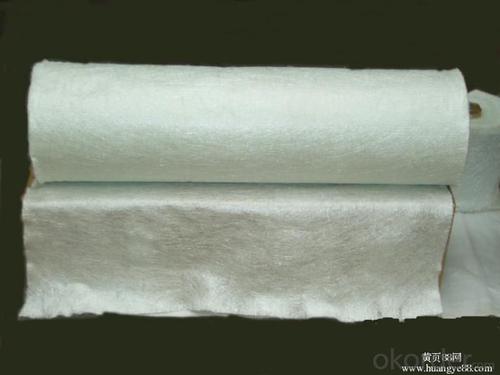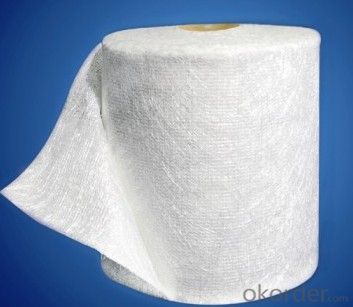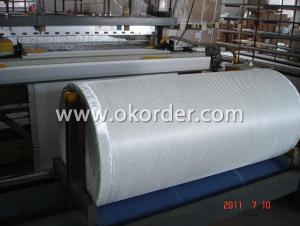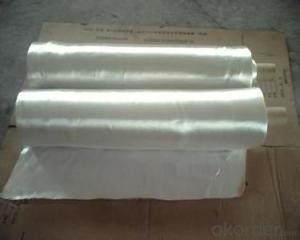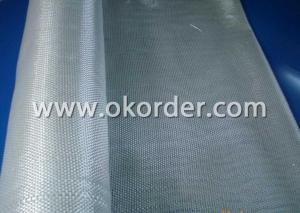Fabric for Fiberglass Speaker Box - Fiber Glass Stitched Mat
- Loading Port:
- China Main Port
- Payment Terms:
- TT or LC
- Min Order Qty:
- 10000 kg
- Supply Capability:
- 200000Kg Per Month kg/month
OKorder Service Pledge
OKorder Financial Service
You Might Also Like
1.Brief Introduction
Two layers of roving(550g/㎡-1250g/㎡) are aligned at 0°/90° with or without a layer of chopped strands(0g/㎡-500g/㎡.
2.Product Structure
3.Product Specifications
Product No. | Overall Density | .0° Roving Density | .90° Roving Density | Chop Density | Polyester Yarn Density |
| (g/m2) | (g/m2) | (g/m2) | (g/m2) | (g/m2) |
E-LTMC1603 | 671.74 | 303.8 | 247.96 | 101.62 | 18.36 |
E-LTMC1608 | 844.76 | 303.8 | 247.96 | 274.64 | 18.36 |
E-LTMC1808 | 903.8 | 303.8 | 307 | 274.64 | 18.36 |
E-LTMC1810 | 934.31 | 303.8 | 307 | 305.15 | 18.36 |
E-LTMC1815 | 1086.89 | 303.8 | 307 | 457.73 | 18.36 |
E-LTMC2408 | 1101.04 | 405.66 | 401.46 | 274.64 | 19.28 |
E-LTMC2415 | 1284.13 | 405.66 | 401.46 | 457.73 | 19.28 |
E-UDL450 | 479.14 | 405.66 | 55.12 | - | 18.36 |
E-UDL500 | 490.85 | 405.66 | 66.83 | - | 18.36 |
E-UDL600 | 608.9 | 566.92 | 23.62 | - | 18.36 |
E-UDL1200 | 1207.34 | 1133.86 | 55.12 | - | 18.36 |
Special specification can be produce according to customer requirements.

4.FAQ
a.Packaging:
Each roll is wound onto a paper tube which has an inside diameter of 76mm and the roll has a diameter of 275mm. The roll is wrapped up with plastic film,and then packed in a cardboard box or wrapped up with kraft paper. The rolls can be horizontally placed. For transportation, the rolls can be loaded into a cantainer directly or on pallets.
b.Storage:
Unless otherwise specified, It should be stored in a dry, cool and rain-proof area. It is recommended that the room temperature and humidity should be always maintained at 15℃~35℃ and 35%~65% respectively.
- Q: What are the disadvantages of using fiberglass fabric?
- One disadvantage of using fiberglass fabric is that it can be brittle and prone to cracking or breaking under certain conditions. Additionally, fiberglass fabric can be quite irritating to the skin and respiratory system, requiring the use of protective gear when working with it. Furthermore, fiberglass fabric is not as flexible as other materials, making it more challenging to work with in certain applications. Finally, fiberglass fabric can be more expensive compared to alternative fabric options, making it less cost-effective for certain projects.
- Q: Can fiberglass fabrics be used for insulation in cryogenic applications?
- Yes, fiberglass fabrics can be used for insulation in cryogenic applications. Fiberglass has excellent thermal properties and can effectively insulate against low temperatures typically found in cryogenic environments. It provides a high level of thermal resistance, preventing heat transfer and maintaining the desired temperature. Additionally, fiberglass fabrics are lightweight, durable, and resistant to moisture and chemicals, making them suitable for cryogenic insulation.
- Q: Hello, could you tell me how to do the surface treatment under the glass fiber cloth? Thank you
- Wash with acid and water and alcohol!
- Q: Can fiberglass fabric be used for filtration applications?
- Yes, fiberglass fabric can be used for filtration applications. It is commonly used in industries such as chemical processing, gas and air filtration, water treatment, and automotive manufacturing. The material's high strength, durability, and resistance to chemicals make it an effective choice for filtering out contaminants in various applications.
- Q: XHJ how about neoprene asphalt waterproof coating?
- Wait for a paint, do solid work (usually for a day, summer for half a day), edge brush, paving and sticking glass fiber cloth, its work method is as follows:The paint evenly on the first line of work has the base brush, will have a glass fiber cloth placed on the top surface, gradually rolling launched just brush the paint on the brush, then stained with paint in has pasted the fiberglass cloth evenly, the glass fiber cloth firmly stuck on the base, and the entire fabric of the upper and lower diffuse full paint, paint together, to ensure the waterproof effect.
- Q: Can fiberglass fabrics be used for reinforcement in boats or yachts?
- Boats and yachts can definitely benefit from the use of fiberglass fabrics for reinforcement. The marine industry widely utilizes fiberglass due to its impressive strength-to-weight ratio. It is commonly employed in boat construction and repair to strengthen different parts of the vessel, including the hull, deck, and bulkheads. Typically, fiberglass fabrics are woven from strands of fiberglass, which are then saturated with resin and hardened to create a solid composite material. This combination of fiberglass and resin results in a sturdy and long-lasting material that can withstand the harsh conditions of the marine environment, such as water, UV rays, and salt exposure. By incorporating fiberglass fabrics for reinforcement, boat and yacht manufacturers can enhance the structural integrity of the vessel, making it more resistant to impacts, stress, and flexing. Fiberglass also offers excellent stiffness and rigidity, ensuring that the boat maintains its shape and stability even in rough waters. Furthermore, fiberglass is incredibly versatile and can be molded into various shapes and forms, enabling the creation of intricate boat structures and components. It can be easily layered and applied to different areas of the boat, providing customized reinforcement as required. In summary, fiberglass fabrics are an exceptional choice for reinforcing boats and yachts due to their strength, lightweight nature, durability, and versatility.
- Q: Can fiberglass fabric be sewn?
- Yes, fiberglass fabric can be sewn. However, it is important to use special sewing techniques and equipment designed for working with this type of fabric, as it is more rigid and has a tendency to fray easily.
- Q: Can fiberglass fabric be used for insulation in food processing plants?
- Yes, fiberglass fabric can be used for insulation in food processing plants. It is a commonly used material due to its heat resistance, durability, and ability to provide thermal insulation. Additionally, fiberglass fabric is non-toxic, non-absorbent, and can withstand high temperatures, making it suitable for use in food processing environments.
- Q: Can fiberglass fabric be used for making heat shields?
- Yes, fiberglass fabric can be used for making heat shields. Fiberglass fabric is known for its excellent heat resistance properties, making it an ideal material for heat shielding applications. It can withstand high temperatures without melting or deforming, providing a protective barrier against heat transfer. Additionally, fiberglass fabric is lightweight, flexible, and has good insulation properties, making it suitable for various heat shield applications, such as in automotive, aerospace, and industrial settings.
- Q: What are the cracks between the brick wall and the beam column, the cracks between the planks and the cracks in the plasterboard?
- You describe these cracks, are essentially composed of different materials in the influence of temperature and humidity of the physical changes now to solve this kind of problem is late with ductile material recovery, wall and ceiling like corner cracking the case, that is to do the above method.
Send your message to us
Fabric for Fiberglass Speaker Box - Fiber Glass Stitched Mat
- Loading Port:
- China Main Port
- Payment Terms:
- TT or LC
- Min Order Qty:
- 10000 kg
- Supply Capability:
- 200000Kg Per Month kg/month
OKorder Service Pledge
OKorder Financial Service
Similar products
Hot products
Hot Searches
Related keywords



